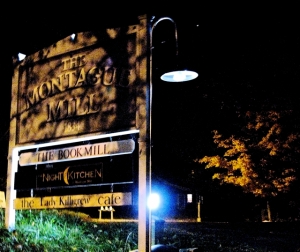 I've been reading James Mauro's take on the 1939 New York World's Fair -- my favorite historic crossroad between past and future. Twilight at the World of Tomorrow chronicles the clairvoyant visions and grandiosity of scale. The fair as not just a carnival or a fish bowl but frankly the best of what the Greatest Generation dared to dream of for our parents' time.
I've been reading James Mauro's take on the 1939 New York World's Fair -- my favorite historic crossroad between past and future. Twilight at the World of Tomorrow chronicles the clairvoyant visions and grandiosity of scale. The fair as not just a carnival or a fish bowl but frankly the best of what the Greatest Generation dared to dream of for our parents' time.Sure, one sobering underside is the naiveté fueling the hopes pinned against the darkening skies of World War and the Death Camps. A more contemporary irony is that this colossal undertaking was all done within the time frame that it takes in our time for a broken commuter rail escalator to go out to bid.
I mention the book because Albert Einstein has a cameo as the flakey genius-philosopher who idles away sleepy Sunday afternoons off the North Fork of Long Island in a moribund and motor-free boat where he can bob to the waves of the LI Sound until the tides determine his return to shore.
That pretty much sums up how I feel about the Book Mill in Montague. Like the bumper sticker says, it's a place with books you don't need in a place you can't find. One finds new excuses to drift back there once this place discovers you. The Book Mill is a haven for creating lazy, lilting vacuums of time to slip away on the back channels of the Connecticut Riverbed. It's there at the fork of the Saw Mill cascade is where some paper mill kingpin planted his own early 19th century vision of a prosperous future.
When I dream in my wi-fi sofa I don't see dollar signs but ...
* an enchanting sanctuary
* an expansive nesting bed of solitude and exploration
* a place for teaching to the insatiable learners of Pioneer Valley
That was my groove path when I approached Louise Minks, the local painter, teacher, and owner of the Millworks Studio -- one of the retail spaces within the Bookmill complex. Louise told me about an ongoing interest by several artisans to revive the vacant space next door with a collaborative of painters and crafts-makers. I said that suits me fine. My classes would happen after shopping hours anyway.
I didn't let on straight away but the proposition I was making extends beyond self-interest. That meant I'd be willing to match my rent commitment with assuming my shopkeeper share during the monthly retail shift. The gesture was not meant to be sweeping or dramatic; just a modest reserve of generosity that bubbles up from the gratitude of having the chance to work with a talented group in a captivating space. I'm not sure if that's how fortunes get made but certainly that's pretty solid footing for how sustainable partnerships come about -- even communities.
What has struck me in terms of the group's formative stages in our first several meetings is how essential it is to show up in the actual space. An email-only presence gives voice to speculations that dwell on the specifics of outcomes as detailed as they seem improbable. They flirt with the temptations of rock-solid business proposals and the contingency plans of a more elaborate and weightier commitment.
The more immediate concern is getting our first year off the ground -- not putting out every potential fire , or worse, a prepared response to our future successes! Heaven forbid we stir too much interest in this enticing, and not intemperate undertaking.
This afternoon we named ourselves the River Arts Collaborative, based on input from Terri Fain. Montague artists Christine Mero and Jill Bromberg agreed to serve as co-chairs for the first year. Susan Essig recorded the notes. Louise and I rounded out the circle. Together we formed a compelling blend of due process and consensus-building with simple intuition and open communication. A nucleus is forming.
Einstein, by the way, refused to wear a life jacket. Apparently his seaside wayfarings were buoyant enough to resist them.


No comments:
Post a Comment